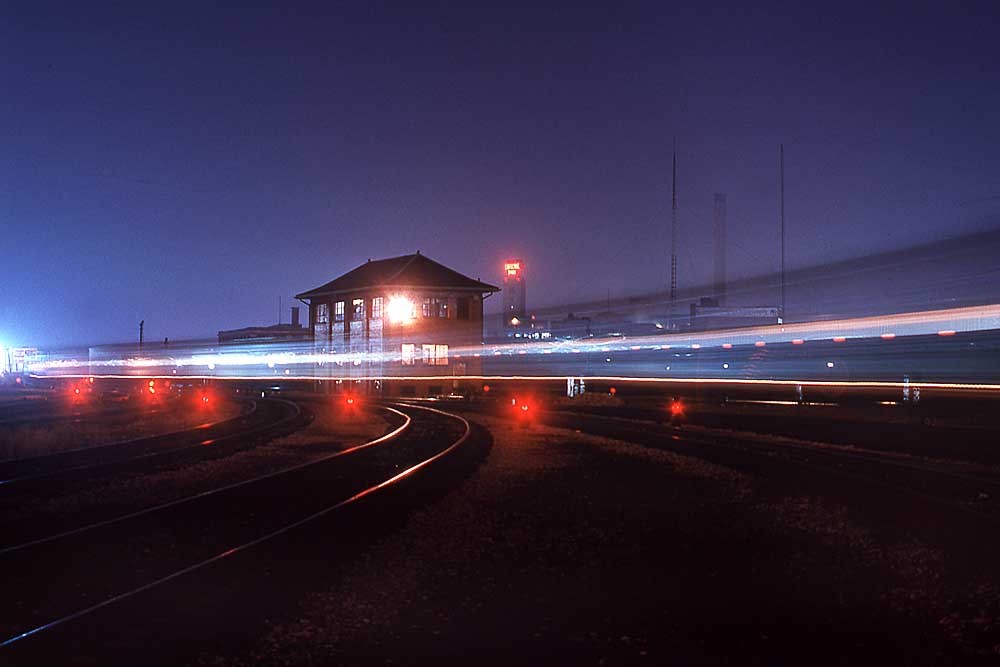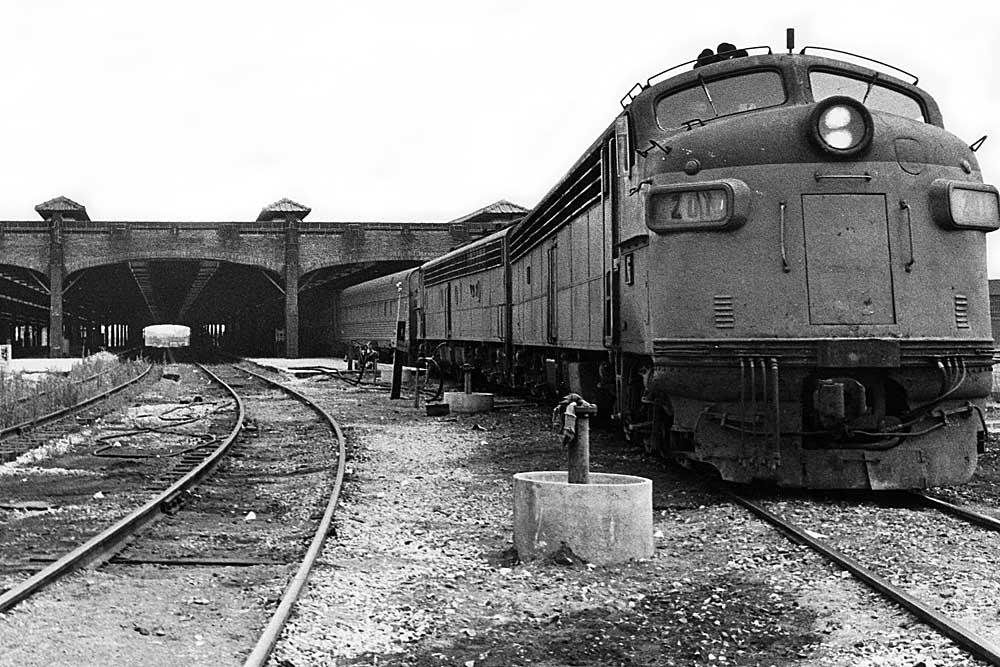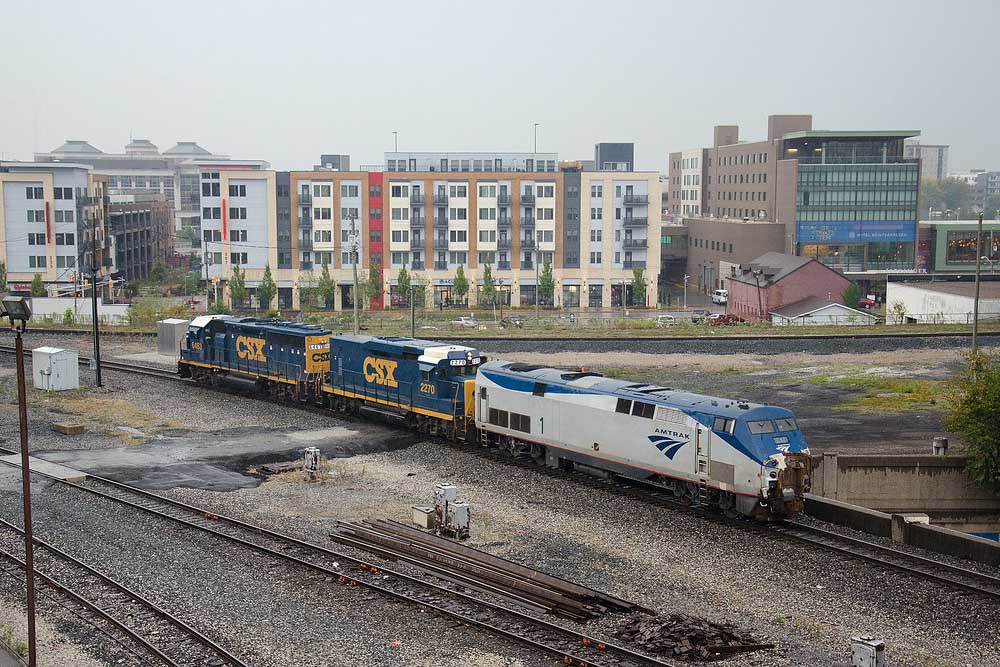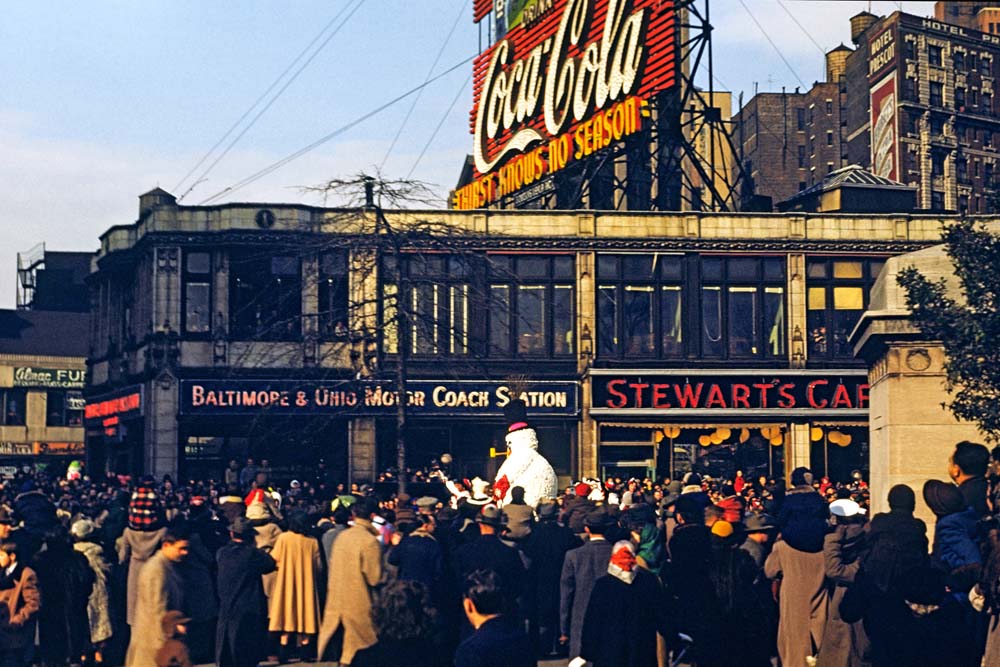Amtrak Indianapolis services exhibit more than their share of tumult through Amtrak’s five decades. No single train has served the city during this time, and, in fact, the Hoosier State’s capital city had no Amtrak service from October 1979 to October 1980.
Amtrak’s Indianapolis station is, and has been, located at 350 S. Illinois St. at the south edge of the former Union Station complex.

Floridian
Amtrak inherited the joint Seaboard Coast Line-Louisville & Nashville-Penn Central South Wind upon startup in May 1971. With its first new timetable in November 1971, Amtrak changed the schedule to a one-day, two-night operation and renamed the train the Floridian.
Due to the deteriorating condition of Penn Central’s track, the train saw various routings in Indiana that included at times PC, Louisville & Nashville (ex-Chicago & Eastern Illinois), and L&N (ex-Monon). On Aug. 1, 1974, the train moved to the L&N (ex-C&EI) via Evansville and Danville, Ill., bypassing both Louisville and Indianapolis. On April 27, 1975, it moved to the L&N (ex-Monon) via Lafayette, still bypassing Indianapolis. This would remain the Amtrak Floridian service routing until the train came off in October 1979.
Traditionally a Tampa train as the South Wind, the Floridian saw the operation of a Miami until the train’s discontinuance in October 1979.
National Limited
The National Limited, Nos. 30 and 31, began operation with Amtrak in 1971, linking New York City and Washington, D.C., with Kansas City. The name was a nod to a Baltimore & Ohio train serving Washington and St. Louis, but on a different route via Cincinnati. Under Amtrak, its eastern portion split at Harrisburg to serve both the Big Apple and our nation’s capital. The National Limited vanished in October 1979 leaving Indianapolis (and Dayton and Columbus, Ohio) without intercity passenger rail service.
James Whitcomb Riley and Cardinal

Upon Amtrak’s creation, it ran the James Whitcomb Riley, named for the Indiana poet, from Chicago to Cincinnati via Indianapolis. The name was inherited from the Penn Central service on the same route. At Cincinnati, it connected with the George Washington, a former Chesapeake & Ohio service, which had sections serving both Washington, D.C., and Newport News, Va. Amtrak combined the trains in July 1971 with the Riley name used for the westbound run and the Washington name used for the eastbound run.
In May 1974 it became the Riley in both directions and began to bypass Indianapolis in favor of the Chesapeake & Ohio via Richmond and Muncie. This was on account of deteriorating track on Penn Central on the train’s traditional route. It would return in April 1986, by then known as the Cardinal, with a new routing west of Indianapolis via Conrail and CSX, taking a new connection at Crawfordsville. By this time it was extended to New York City to the east and began tri-weekly operation using Nos. 50-51.
In the late 1990s and early 2000s the Cardinal was equipped with bilevel Superliner equipment and cut back to Washington, D.C. It later reverted to single-level Amfleet and Viewliner cars in 2003 and was extended back to New York City.
Hoosier State and Kentucky Cardinal
Amtrak inaugurated the Chicago to Indianapolis Hoosier State on Oct. 1, 1980. This was in part to shuttle cars to Amtrak’s Beech Grove Heavy Maintenance Facility on the south side of Indianapolis. The train followed a combined CSX-Conrail routing serving Crawfordsville and Lafayette. When the Cardinal returned in 1986, Amtrak shuffled the Hoosier State schedule. It eventually landed on operating both trains on the same schedule, running the Hoosier State only on days the Cardinal did not.
On Dec. 17, 1999, Amtrak extended the Hoosier State to become the Kentucky Cardinal, operating between Chicago and Jeffersonville, Ind.; it would eventually be extended to Louisville, Ky., proper before coming off in July 2003. Technically a daily train, it operated combined with the Cardinal on the days the long-distance train ran. For a while it ran with a Superliner coach and sleeper, but by the end it consisted of a single Horizon coach. Then it reverted to the Hoosier State name and operation.
The post-2003 Hoosier State went through a number of schedule and funding changes. The state contracted with Iowa Pacific Holdings, which supplied a mix of vintage equipment, from August 2015 to March 2017, while Amtrak still provided operating crews. After that period, Amtrak resumed full operation until the train’s discontinuance in June 2019.














